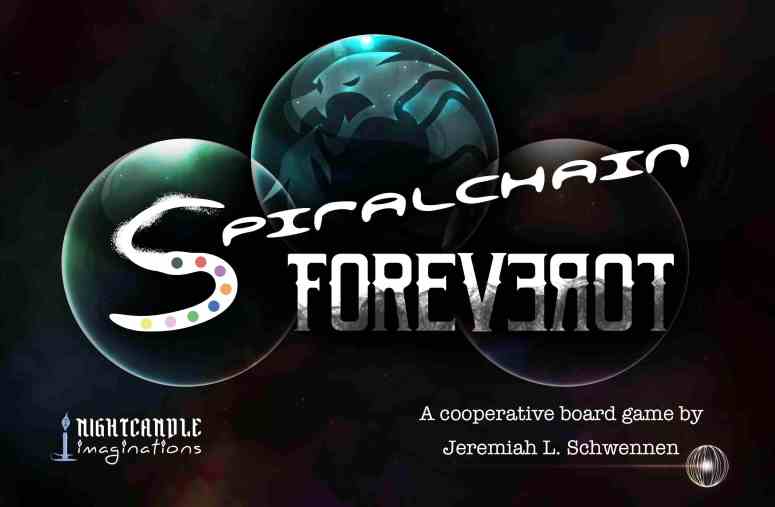
The instruction booklet in the board game walks players through each of the steps in preparing a game of Spiralchain: Foreverot, but sometimes it’s nice to see things in a little bit more of a step-by-step fashion… something we simply didn’t have the room in the instruction booklet to share. But thanks to the magic of the internet, we do have the room for step-by-step photos of game set-up right here on Spiralchain.net.
The text below is taken directly from the instruction book for the game… and after each step is a photo of what that step might look like when carried out on your game table! Red text along the way will provide additional clarity, and blue text will provide “director’s commentary” that you might find useful!
SET-UP
Italicized directions apply only to games with the specified number of players.
We begin with a blank play area…

1. Arrange the 8 World Boards on the table in numerical order from 1 (Nur) to 8 (Pithysia). Place the Verge Indicator between Onus and Arctos. Place the Event Board nearby.
The 8 World Boards can be laid out in whatever pattern or configuration you like. All that matters is that it is obvious which ones are adjacent in numerical order and that the Verge Indicator is laid out in such a way that the Down arrow points to Onus and the Up arrow points to Arctos.
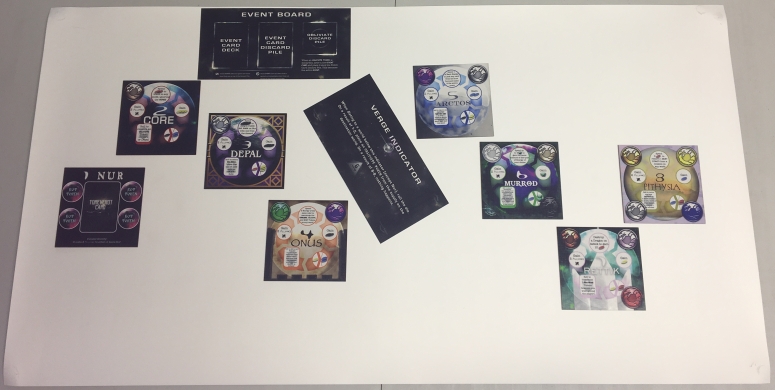
2. Deal a Role Card to each player and give each player a Player Pawn. Return unused Role Cards and Player Pawns to the box. In 1 or 2 player games, deal two Role Cards to each player. Each player still only gets one Player Pawn.
For this sample set-up, we are going with a 4 player game.
Alternatively, you could let each player decide which role they wish to play. To help keep everyone on the same page as far as which player is using which pawn, we assigned a pawn color to each Role Card in the upper right corner of the card.
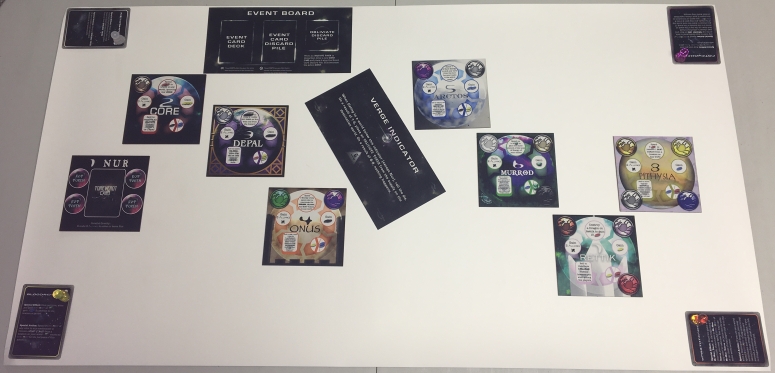
3. Randomize each of the seven groups of World Tokens with matching backs. Place one face-down on each white location on the world shown on their backs. There will be one excess token for each world—turn those face up. Return all excess Warlord or Obliviate Tokens to the box. Make a pile of unused Ruin Tokens near the playing area.
The five “white locations” that get covered on each board are generally circular in shape, but you may notice that the lower left-hand space is differently shaped. It still counts as a location space and still gets covered with a World Token in this step. The exact reason why that space is shaped differently is a mystery to be revealed later!
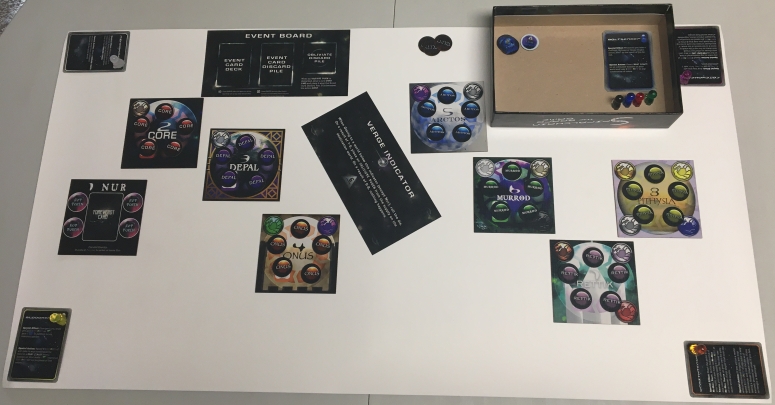
4. Turn all World Tokens face up. Move all Ruin Tokens to the pile with the others—this is the Ruin supply. Leave any Obliviate or Warlord Tokens in place.
This randomization is a huge part of what makes the game endlessly replayable. The spaces that end up covered by an Obliviate or a Warlord are (at least temporarily) unavailable to the players, so the strategy in the game has to constantly adapt to resource availability.
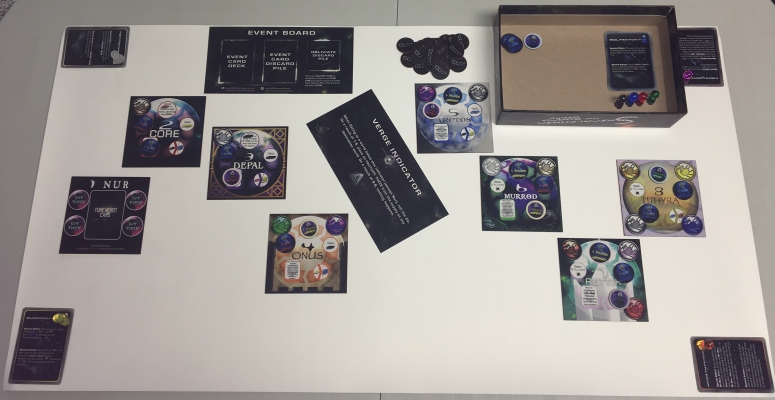
5. Randomly choose eight Rot Tokens and place them in stacks of two, face-up, on each of the Rot Stack spaces on Nur.
Note that the photographer (who is also the game designer) failed to follow his own directions. In this photo series, the Rot Tokens on Nur are face-down. They SHOULD be face-up!
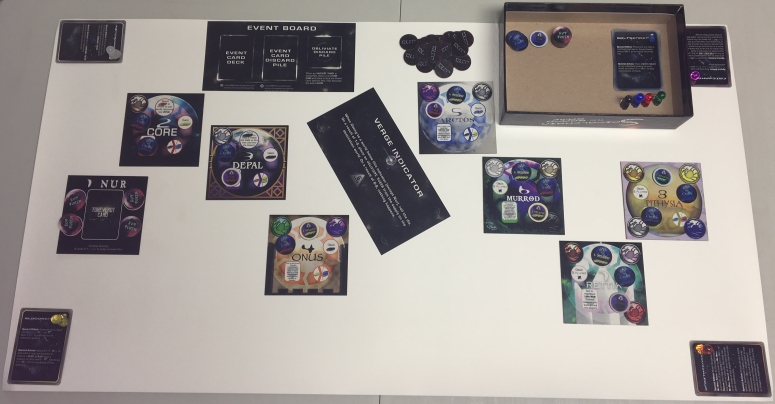
6. Deal eight random Foreverot Cards, face-down, into a deck on the Foreverot Card space on Nur. Return the rest of the cards to the box.
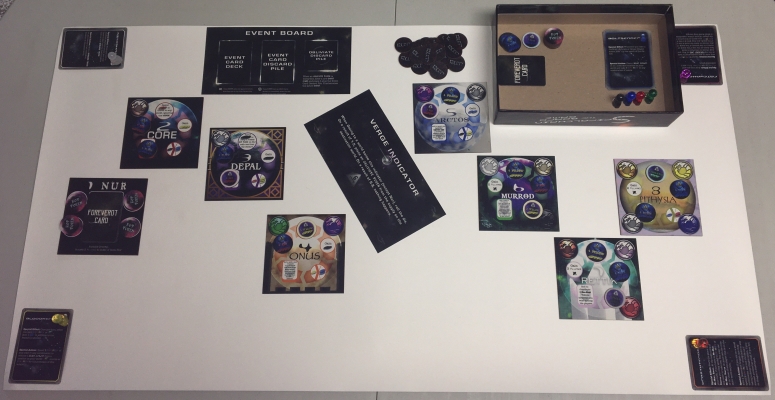
7. Place the Alliance Track Board somewhere easily accessible to all players and place the Current Alliance Token on the value equal to the number of players.
If one of the players is playing the Fatewaker role, they might as well keep the Alliance Track Board next to them. Trust us.
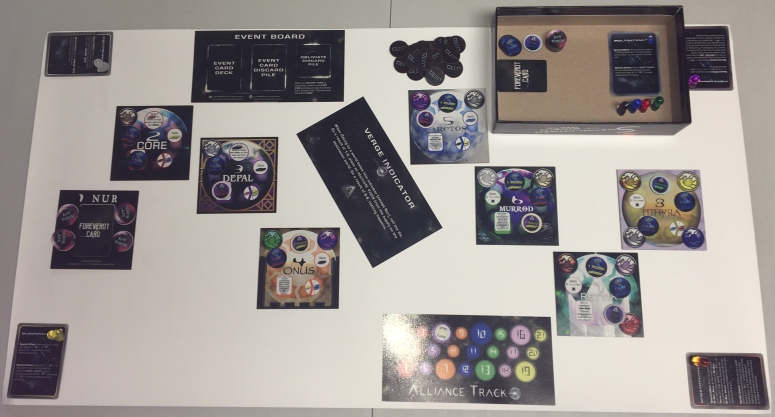
8. Place the four colors of Energy Tokens, the Bindmetal Tokens, the Re-Roll Tokens, the Obliviate Tokens, and the Permanent Gate Cards in piles near the board. This is the rest of the supply.
It is important to NOT just keep all of these things in the game box. “In the game box” is a specific location in the game mechanics that equates to “removed from the game,” and some of those energy tokens from the supply are very likely to get sent back to the game box at some point!
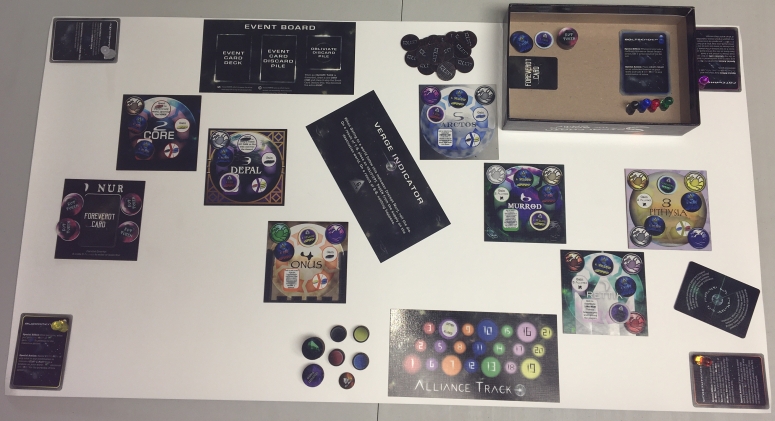
9. Decide which player is going to begin play—they take the First Player Marker and the 8-sided die. Randomly distribute Extra Action Cards (two in a 5-player game, four in a 7- or 8-player game). Return unused Extra Action Cards to the box.
Note that the photographer failed to put the unused Extra Action Cards back in the box. This is corrected in the next photo.
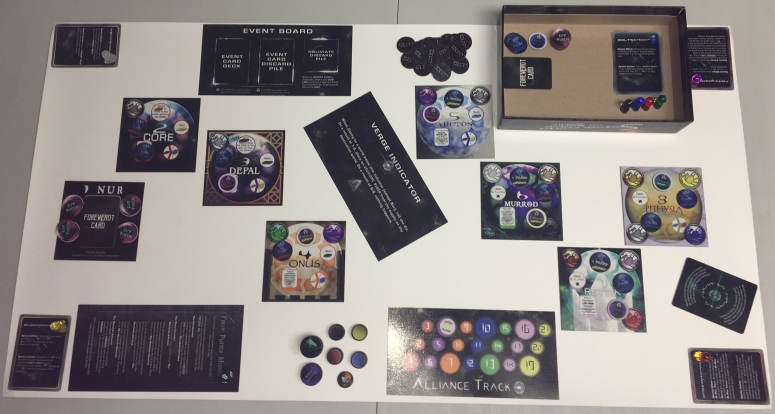
10. Place all players’ pawns in the center of the Onus board. In a 1-, 2-, or 3-player game, place extra pawns on Onus to bring the total number of pawns there to four. These are Reinforcement Pawns.
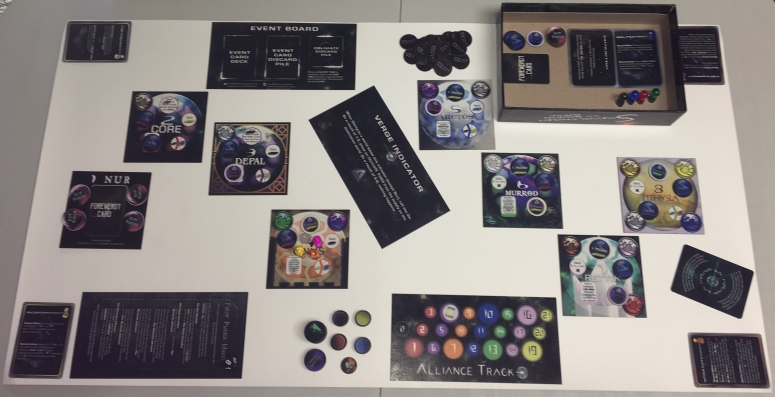
11. Shuffle the Event Cards and draw until you find a card with [Continuous Icon]. Place it face up in the Event Card Discard Pile on the Event Board. This is the current Event. Reshuffle all other Event Cards and place them on the Event Card Deck space.
The Event Board is sort of easy to forget to keep an eye on during the game. Whoever is seated closest to the Event Board should take up the responsibility of keeping an eye on the current event and cycling to the next one whenever an Obliviate is discarded. To help everyone remember this, we placed an ‘Obliviate Discard Pile’ space right there on the Event Board.
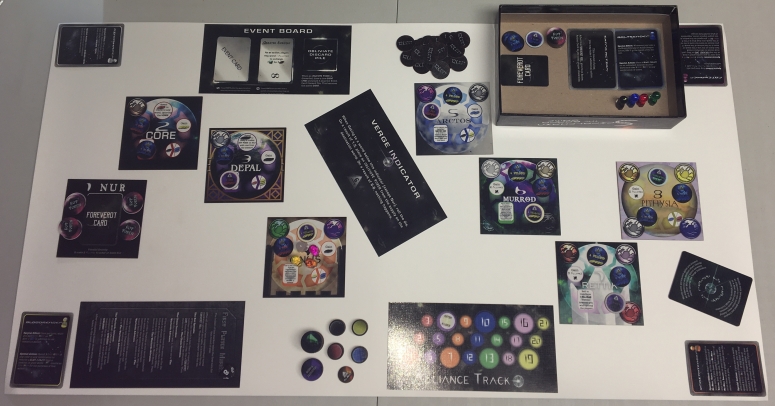
12. Determine the challenge you wish to face (see Challenge Chart, next page). Flip over the indicated number of Foreverot Cards and follow the directions on each of them in the order they were revealed.
For this sample set-up, we are going with an Easy challenge, which means 3 cards are flipped.
For those curious, the challenge levels range from Beginner (2 cards) to Extreme (6 cards). None of our playtest games were ever able to win on Extreme!
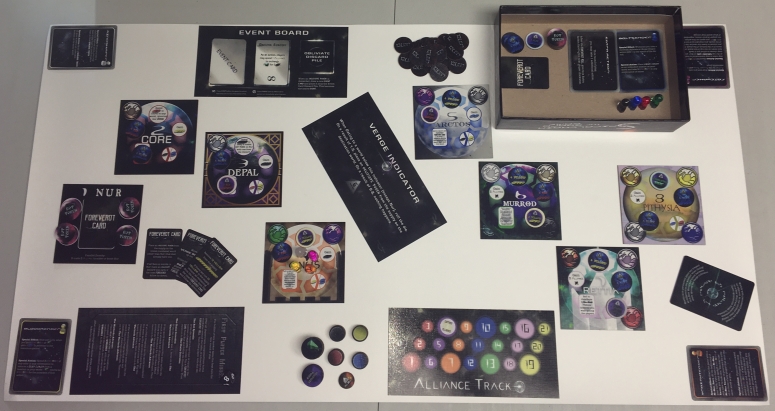
13. The game is now ready to play!
